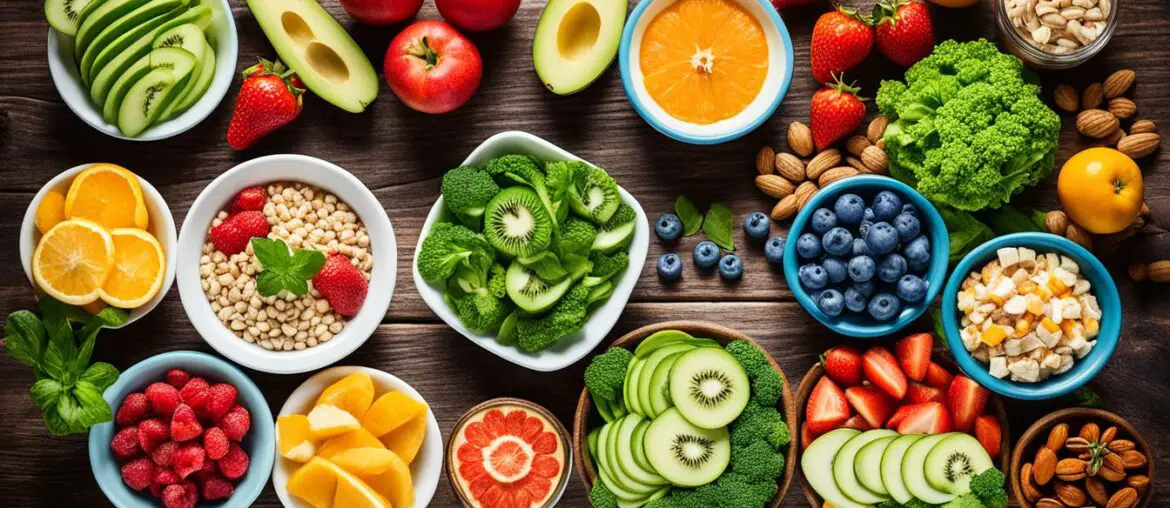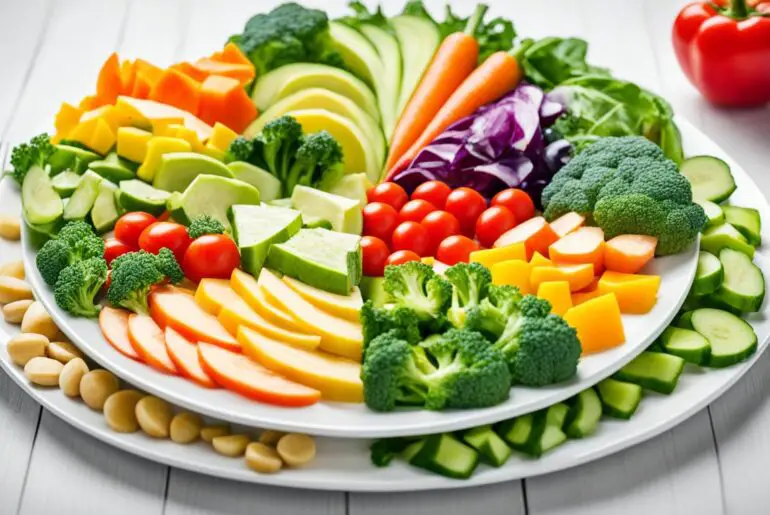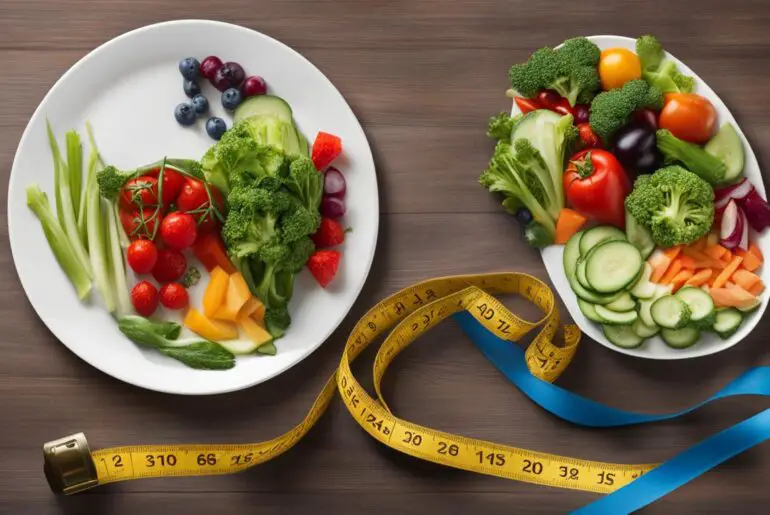Did you know that the HCG Diet can help you lose up to one pound per day? With such rapid weight loss potential, it’s no wonder that the HCG Diet has gained popularity among those looking to shed pounds quickly and safely. In Phase 1 of the HCG Diet, also known as the Loading Phase, you’ll prepare your body for the journey ahead by gorging on high-calorie, high-fat foods and taking HCG injections. This phase sets the foundation for successful weight loss and establishes healthier eating habits.
Key Takeaways:
- Phase 1 of the HCG Diet is known as the Loading Phase, where you gorge on high-calorie, high-fat foods.
- HCG injections in Phase 1 help reset the body’s Set-Point and increase the rate of fat burning.
- The HCG Diet consists of three phases: Phase 1 (Loading Phase), Phase 2 (Low Calorie Diet Phase), and Phase 3 (Maintenance Phase).
- In Phase 1, it’s essential to mentally prepare for the diet, set goals, and stock up on foods that align with the HCG Diet guidelines.
- Phase 1 food choices include specific proteins, vegetables, and fruits.
The Benefits of HCG in Phase 1
When HCG is administered, the body responds by increasing the rate of fat burning. This leads to benefits such as decreased hunger, balanced energy levels, and the burning of abnormal fat. Moreover, HCG helps preserve muscle mass during rapid weight loss, unlike other diets that often result in muscle loss.
During Phase 1 of the HCG Diet, also known as the Loading Phase, patients are encouraged to gorge on high-calorie, high-fat foods and take HCG injections. The purpose of this phase is to prepare the body for the upcoming phases and promote a healthier lifestyle through the use of less fatty foods and products.
The Phases of the HCG Diet
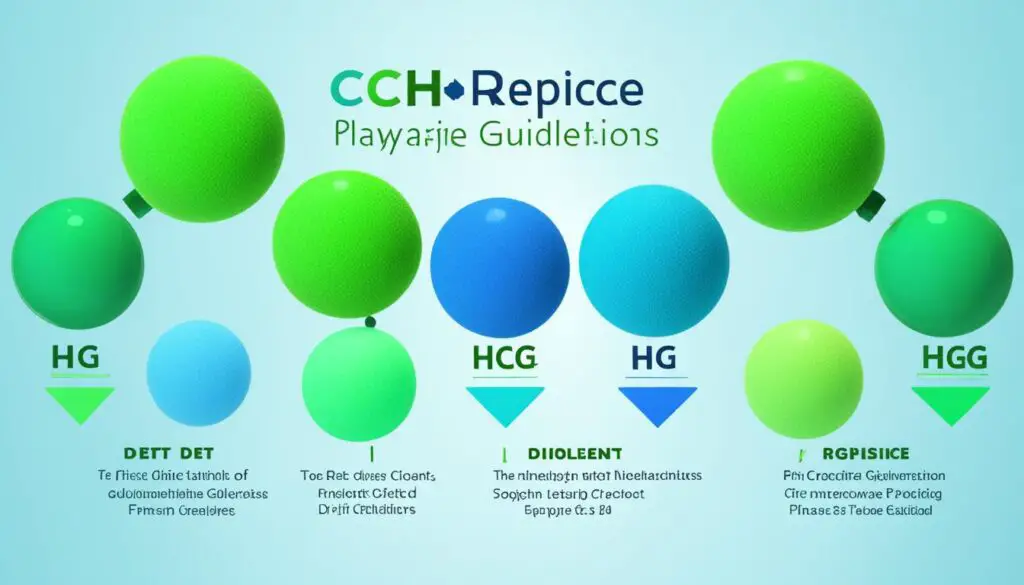
The HCG Diet consists of three phases: Phase 1 (Gorging Phase), Phase 2 (Low Calorie Diet Phase), and Phase 3 (Maintenance Phase).
Phase 1, also known as the Gorging Phase, lasts for two days. During this phase, patients are encouraged to gorge on high-calorie, high-fat foods. The purpose of this phase is to stimulate the body to release fat deposits and increase the metabolic rate. Additionally, HCG injections are started during this phase to support the body’s fat-burning process.
Phase 2, the Low Calorie Diet Phase, lasts for 3-40 days, depending on the specific plan. In this phase, patients follow a strict 500-calorie diet consisting of specific proteins, fruits, and vegetables. The daily HCG injections continue to aid in fat burning and help suppress hunger. This phase is crucial for steady weight loss and resetting the body’s metabolism.
Phase 3, known as the Maintenance Phase, spans three weeks. Its primary focus is on gradually increasing calorie intake while avoiding sugars and starches. During this phase, patients can reintroduce a wider variety of foods into their diet, with the aim of stabilizing weight after the initial weight loss. The Maintenance Phase plays a vital role in maintaining long-term results and establishing sustainable eating habits.
Phase 1: Gorging Phase
In Phase 1 of the HCG Diet, also known as the Gorging Phase, patients are encouraged to indulge in excessive eating for two days. This phase plays a crucial role in preparing the body for the subsequent phases of the diet. During the Gorging Phase, individuals focus on consuming high-calorie and high-fat foods to stimulate fat release and increase their metabolic rate.
The objective of the Gorging Phase is to reset the body’s Set-Point and kickstart the fat-burning process. By consuming a surplus of calories, the body reacts by releasing fat deposits, which will be used as a source of energy in the following phases.
Moreover, HCG injections are initiated during Phase 1 to further enhance the effects of the diet. These injections contain Human Chorionic Gonadotropin, a hormone naturally produced by the body. HCG aids in increasing the metabolic rate and promoting fat burning, while simultaneously preserving muscle mass.
“During the Gorging Phase, individuals focus on consuming high-calorie and high-fat foods to stimulate fat release and increase their metabolic rate.”
The Gorging Phase sets the foundation for the rest of the HCG Diet and prepares the body for the subsequent phases. It is essential to adhere to the guidelines of this phase to maximize the benefits of the diet and optimize weight loss results.
| Phase 1: Gorging Phase | Duration | Key Focus |
|---|---|---|
| The Gorging Phase | 2 days | Excessive eating of high-calorie and high-fat foods |
| Objective | – | Stimulate fat release, increase metabolic rate, and reset body’s Set-Point |
| – | – |
Phase 2: Low Calorie Diet
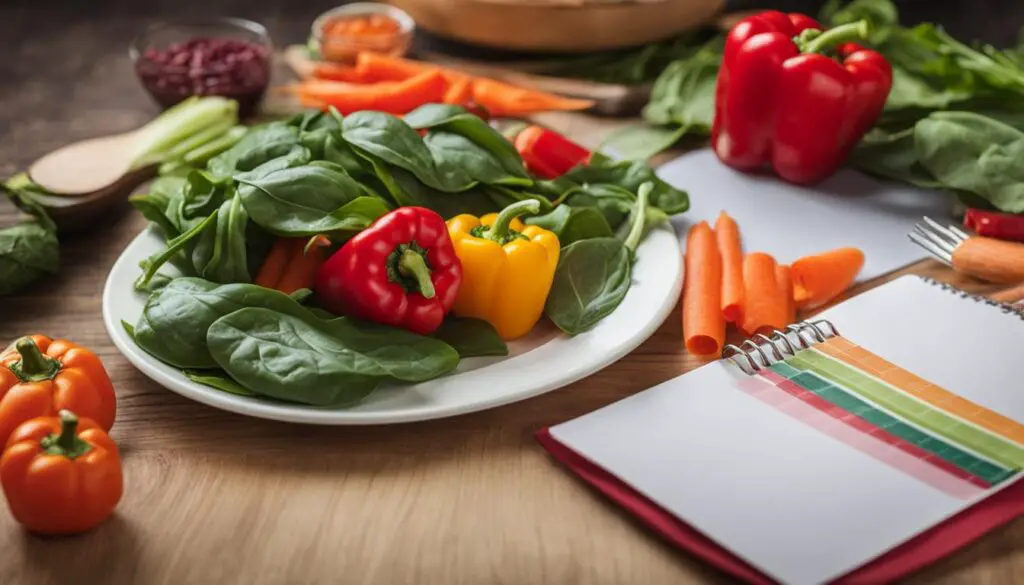
In Phase 2 of the HCG Diet, also known as the Low Calorie Diet phase, you’ll embark on a journey of disciplined eating to continue your weight loss progress. This phase typically lasts for 3-40 days, depending on your individual plan.
During Phase 2, you’ll adhere to a strict 500-calorie diet, which may sound challenging, but it’s an essential component of the HCG Diet protocol. By following this low-calorie regimen, you’ll maximize fat burning and accelerate your weight loss.
To ensure you’re getting the necessary nutrients while consuming so few calories, the HCG Diet specifies specific proteins, fruits, and vegetables that are allowed. These foods provide the essential vitamins, minerals, and energy your body needs to thrive throughout the low-calorie phase.
Continuing with the daily HCG injections is crucial during Phase 2. The injections stimulate your metabolism, help suppress hunger, and promote the burning of stubborn fat deposits.
Sample HCG Diet Phase 2 Meal Plan
To give you an idea of what a typical day may look like during Phase 2, here’s a sample meal plan:
| Meal | Food Choices |
|---|---|
| Breakfast | 3 egg whites, 1 whole egg, spinach |
| Lunch | 100g of chicken breast, lettuce, cherry tomatoes |
| Afternoon Snack | An apple |
| Dinner | 100g of white fish, asparagus |
| Evening Snack | A handful of strawberries |
Remember, this is just a sample meal plan, and individual meal plans may vary depending on your preferences and dietary needs. It’s essential to consult with your healthcare provider, nutritionist, or coach to create a personalized meal plan that works best for you.
By following Phase 2 of the HCG Diet and strictly adhering to the low-calorie diet, you’ll experience significant weight loss as your body continues to burn fat for energy. The combination of proper nutrition and HCG injections will help you achieve your weight loss goals effectively.
Continue reading to learn about the final phase of the HCG Diet, Phase 3: Maintenance Phase, where you’ll transition to a higher calorie intake while maintaining your weight loss.
Phase 3: Maintenance Phase
Phase 3, known as the Maintenance Phase, is a crucial part of the HCG Diet journey. Lasting for three weeks, this phase focuses on gradually increasing calorie intake to help stabilize weight after the initial weight loss. During this phase, patients can reintroduce a wider variety of foods, but the avoidance of sugars and starches should still be prioritized. The main goal of the Maintenance Phase is to maintain metabolic function while establishing healthy eating habits for long-term success.
In Phase 3, patients typically aim for a calorie intake of 1500-2000 calories per day. This increase in calories allows for a more balanced and sustainable approach to eating. It is important to note that the calorie increase should be gradual to prevent weight gain and ensure the body adjusts appropriately.
“The Maintenance Phase is a critical time to establish new healthy eating habits and support long-term weight maintenance,” says Dr. Emily Johnson, a renowned nutritionist specializing in the HCG Diet.
During the Maintenance Phase, patients should focus on incorporating nutrient-dense and whole foods into their diet. This includes lean proteins, vegetables, fruits, and healthy fats. It is essential to prioritize foods that provide sustained energy and support overall health.
| Recommended Foods for the Maintenance Phase |
|---|
| Lean proteins: chicken breast, turkey, lean beef, fish, tofu |
| Vegetables: spinach, broccoli, kale, cauliflower, peppers |
| Fruits: berries, apples, citrus fruits, melons |
| Healthy fats: avocados, nuts, seeds, olive oil |
| Whole grains (in moderation): quinoa, brown rice, oats |
By focusing on these nutrient-rich foods, patients can continue to support their overall health and provide their bodies with the necessary nutrients for optimal functioning.
It is important to note that while the Maintenance Phase allows for a wider variety of foods, sugar and starch avoidance is still advised. These types of carbohydrates can lead to weight gain and disrupt blood sugar levels. By limiting sugar and starch intake, patients can better regulate their energy levels and maintain the progress achieved during the previous phases.
“Maintaining weight loss and a healthy lifestyle requires a balance between calorie intake, food choices, and physical activity,” recommends Dr. Johnson. “Adhering to the principles of the Maintenance Phase is crucial for long-term success.”
Diet Preparation Tips for Phase 1
Preparing for Phase 1 of the HCG Diet is crucial for a successful start on your weight loss journey. Taking the time to mentally prepare, set goals, and organize your grocery list and meal preparation can greatly enhance your adherence to the diet. Additionally, tracking your progress can help you stay motivated and celebrate milestones along the way.
Mental Preparation and Goal Setting
Before embarking on Phase 1 of the HCG Diet, it’s important to recognize the need for weight loss and establish clear goals. Take some time to reflect on your reasons for wanting to lose weight and visualize the desired outcome. Set specific and achievable goals that you can work towards throughout the diet. This mental preparation will help you stay motivated and focused on your journey.
Organizing Your Grocery List
To make Phase 1 meal planning easier, create an inventory of foods that align with the HCG Diet guidelines. This includes lean protein options, specific vegetables, and approved fruits. Having a well-organized grocery list will save you time and confusion at the store, making it easier to stick to the diet plan.
Preparing Meals in Advance
Meal preparation is key to maintaining consistency and avoiding impulsive food choices during Phase 1. Dedicate time each week to prepare your meals in advance, especially for the first week. Having pre-portioned meals ready to go will help you stay on track and prevent unnecessary deviations from the diet plan.
Track Your Progress
Measuring your progress is essential for staying motivated and keeping an eye on your achievements. Regularly track your weight loss and inches lost using a scale and measuring tape. Set milestone goals and celebrate each achievement along the way. This self-monitoring will not only boost your motivation but also provide valuable insights into the effectiveness of the HCG Diet for you.
“By mentally preparing, organizing your grocery list, preparing meals in advance, and tracking your progress, you can set yourself up for success in Phase 1 of the HCG Diet.”
Remember, Phase 1 is just the beginning of your weight loss journey, and setting a strong foundation is crucial for long-term success. Stay committed, follow the guidelines, and reach out for support when needed. With proper preparation and dedication, you can achieve your weight loss goals with the HCG Diet.
Phase 1 Food List
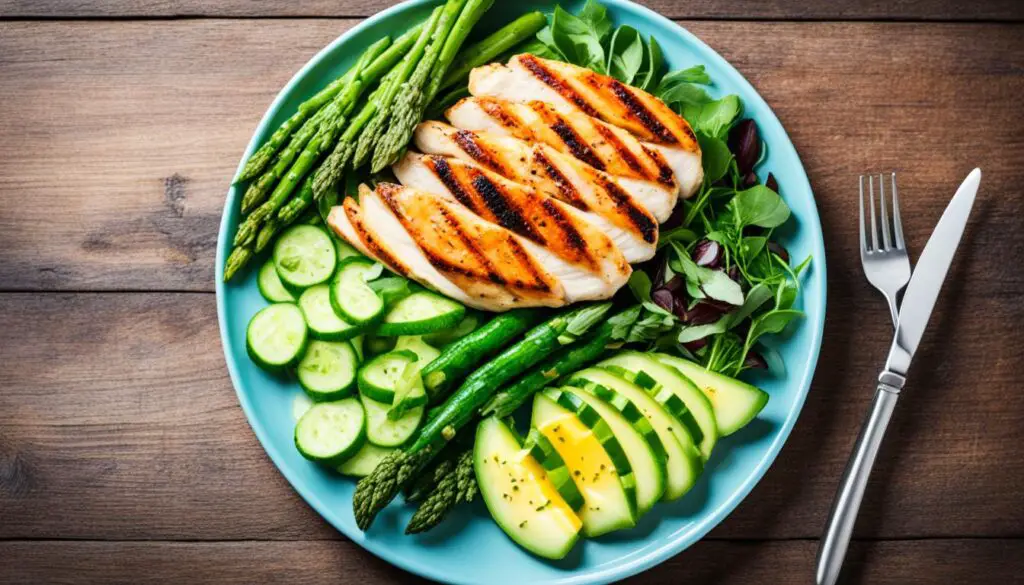
In Phase 1 of the HCG Diet, your food choices are limited to specific proteins, vegetables, and fruits. These options provide the necessary nutrients while keeping your calorie intake in check. Below, you’ll find a breakdown of the protein choices, vegetable choices, and fruit choices that are allowed during this phase.
Protein Choices
During Phase 1, you have a variety of protein options to choose from. Here are some of the approved protein choices:
| Protein Choices |
|---|
| Chicken breast |
| Turkey |
| Beef |
| White fish |
| Eggs |
Vegetable Choices
When it comes to vegetables, you have a range of choices that can add variety to your meals. Some of the approved vegetable choices for Phase 1 include:
| Vegetable Choices |
|---|
| Broccoli |
| Mushrooms |
| Spinach |
Fruit Choices
In Phase 1, you can enjoy a selection of fruits to satisfy your sweet cravings. Here are some of the approved fruit choices:
| Fruit Choices |
|---|
| Apples |
| Oranges |
| Strawberries |
Remember to incorporate these protein, vegetable, and fruit choices into your meals during Phase 1 of the HCG Diet. Be sure to consult with your healthcare provider or a registered dietitian for personalized guidance and any specific dietary restrictions.
Plateau Breakers and Troubleshooting
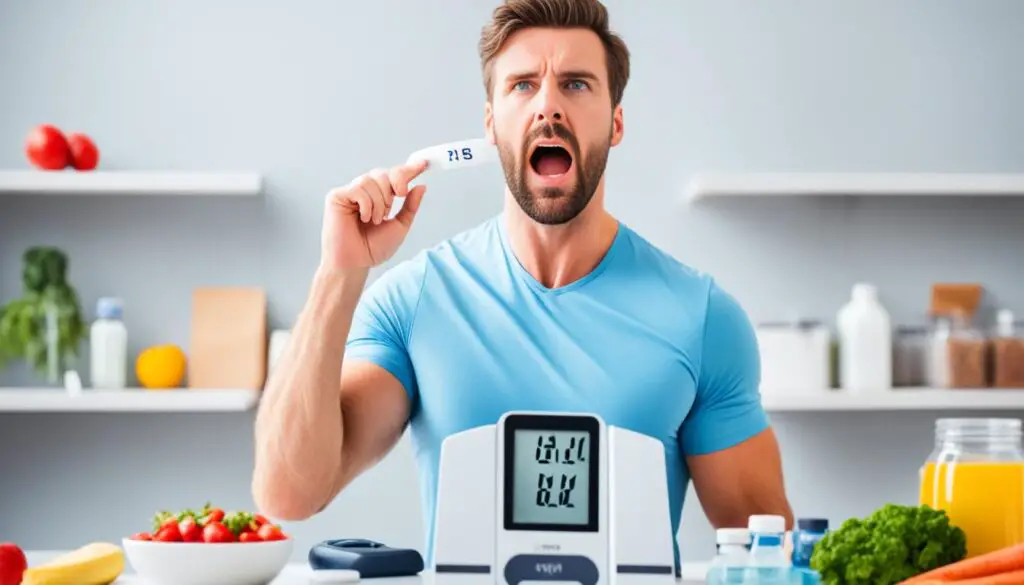
Plateaus can be frustrating when you’re on the HCG Diet, but they’re not uncommon. If you find that your weight loss has stalled and you’re not seeing the results you expect, don’t worry! There are methods you can employ to break through the plateau and continue on your weight loss journey. Here are some troubleshooting tips and strategies to help you overcome plateaus and reach your goals:
1. Increase Water Intake
Staying hydrated is essential for optimal weight loss. Adequate water intake helps flush out toxins, aids digestion, and boosts metabolism. Aim to drink at least 8-10 glasses of water per day. By increasing your water intake, you may stimulate your body to release stored fat and improve your weight loss progress.
2. Adjust Protein Amounts
Protein is an important component of the HCG Diet, as it helps preserve muscle mass while promoting fat burning. However, consuming too much or too little protein can affect your weight loss. If you’re experiencing a plateau, try adjusting the amount of protein in your meals. Ensure you’re getting enough to satisfy your nutritional needs without exceeding the recommended portion size.
3. Incorporate Apple Day or Steak Day
Apple Day and Steak Day are two methods commonly used to break through weight plateaus on the HCG Diet. Apple Day involves consuming only apples and drinking water for an entire day, while Steak Day involves having a large steak for lunch and dinner, along with an apple or raw tomato. These strategies can help jumpstart your weight loss by creating a caloric deficit and stimulating your metabolism.
4. Check for Hidden Sugars
Some condiments and food products may contain hidden sugars that can impede your weight loss progress. It’s crucial to read labels carefully and avoid any items that contain added sugars or high carbohydrate content. By eliminating hidden sugars from your diet, you can promote fat burning and get back on track with your weight loss goals.
Remember, the HCG Diet is highly individualized, and what works for one person may not work for another. It’s essential to listen to your body, make adjustments based on your own experiences, and consult with your healthcare provider or HCG Diet specialist for personalized guidance.
| Plateau Breakers and Troubleshooting Tips |
|---|
| 1. Increase water intake |
| 2. Adjust protein amounts |
| 3. Incorporate Apple Day or Steak Day |
| 4. Check for hidden sugars |
Conclusion
The HCG Diet Phase 1 lays the groundwork for a successful weight loss journey. By adhering to the protocol and preparing diligently for the different phases, individuals can achieve significant weight loss while simultaneously preserving muscle mass. This is key to maintaining a healthy metabolism and ensuring long-term success.
The introduction of healthy eating habits is a crucial component of the HCG Diet. By following the guidelines and incorporating nutrient-dense foods, individuals can not only shed unwanted pounds but also improve their overall health. The HCG Diet encourages the consumption of lean proteins, fresh vegetables, and select fruits, providing a well-rounded approach to nutrition.
Furthermore, the HCG Diet promotes long-term changes in lifestyle and eating habits. It encourages individuals to make healthier choices even after completing the diet plan. By incorporating these changes into their daily lives, individuals can sustain their weight loss and enjoy the benefits of improved long-term health.
FAQ
What is the HCG Diet Phase 1?
The HCG Diet Phase 1, also known as the Gorging Phase, lasts for two days and involves excessive eating (gorging) and starting HCG injections.
What are the benefits of HCG in Phase 1?
HCG promotes fat burning, suppresses hunger, and helps preserve muscle mass during rapid weight loss.
What are the phases of the HCG Diet?
The HCG Diet consists of three phases: Phase 1 (Gorging Phase), Phase 2 (Low Calorie Diet Phase), and Phase 3 (Maintenance Phase).
What is Phase 1 in the HCG Diet?
Phase 1, also known as the Gorging Phase, lasts for two days and involves excessive eating (gorging) and starting HCG injections.
What is Phase 2 in the HCG Diet?
Phase 2, also known as the Low Calorie Diet phase, lasts for 3-40 days, depending on the plan. It includes a strict 500-calorie diet and daily HCG injections.
What is Phase 3 in the HCG Diet?
Phase 3, the Maintenance Phase, lasts for three weeks and focuses on gradually increasing calorie intake while avoiding sugars and starches.
How can I prepare for Phase 1 of the HCG Diet?
To prepare for Phase 1, mentally recognize the need to lose weight, set goals, create a grocery list of approved foods, and prepare the first week’s meals in advance.
What foods are allowed in Phase 1 of the HCG Diet?
Phase 1 food choices include specific proteins like chicken breast, turkey, and eggs, as well as vegetables like broccoli and spinach, and fruits such as apples and oranges, among others.
How can I break through weight plateaus during the HCG Diet?
To break through weight plateaus, you can increase water intake, adjust protein amounts, incorporate Apple Day or Steak Day, and check for hidden sugars in condiments and food products.
What is the conclusion of the HCG Diet?
The HCG Diet Phase 1 sets the foundation for a successful weight loss journey, helping individuals achieve significant weight loss while preserving muscle mass and promoting overall health.

